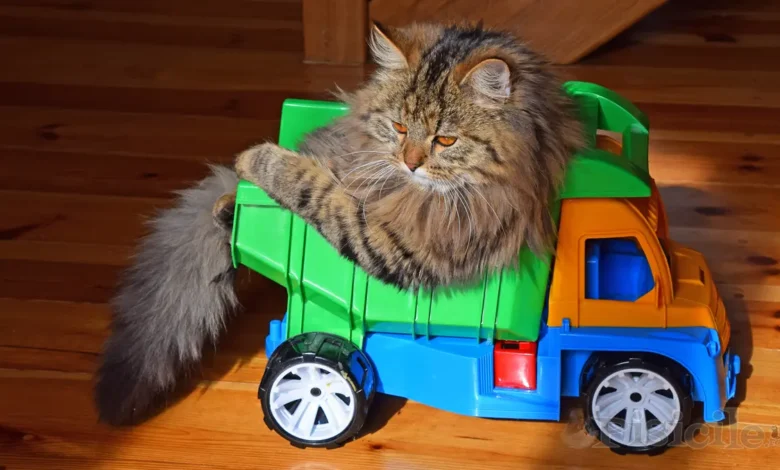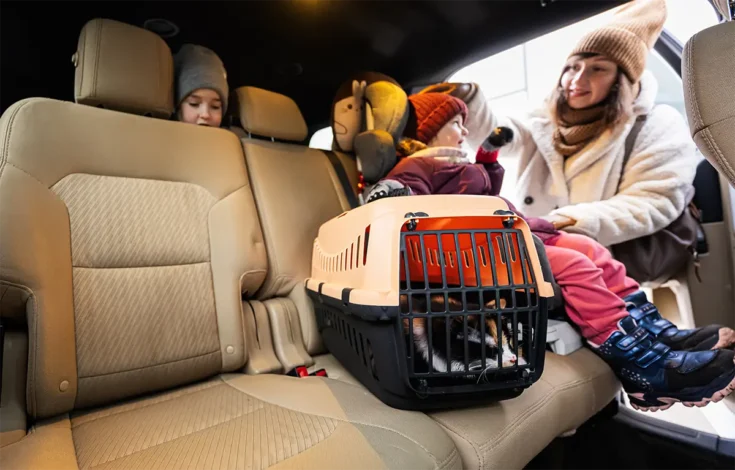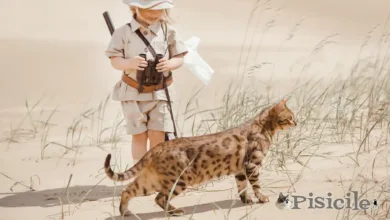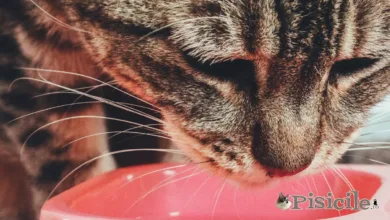
Many animal lovers think before adopting a cat that it might limit their freedom to travel on vacations, holidays or when they have other travel to do. It's true that cats don't like to travel, but if you keep a few tips in mind, you can transport your cat by car even over long distances.
First of all, you should know that there are cats for whom car rides are not a problem, in fact they are delighted. On the other hand, there are also cats that get car sick or panic a lot during transport. However, with a little planning and preparation, you can make car travel more comfortable for both you and your cat.
Subject
What do you need to keep in mind when transporting your cat by car?
First of all, it is highly recommended that the cat is not let loose in the car. Even if it is a good cat in the house, in the car it can become agitated, scared, and from here to unpleasant incidents is only a step away. The cat can jump on the driver's headrest, on the dashboard of the car, or even worse, it can get under the accelerator, brake pedals. Therefore, it is highly recommended that when transporting the cat by car, it is kept in a special transport cage, in a closed cat basket or in a cat carrier bag. It is not recommended to keep the cat on a leash or harness during transport by car.
Make sure the car is ventilated and set to an optimal temperature before bringing the cat, especially in the summer. It is not recommended to bring the cat into a car that has been in the sun for a long time, where the temperature is above 30 degrees Celsius.
Use air conditioning in the summer and heating in the winter, but avoid directing the air directly at the cat's cage. If the journey is long, make regular stops to check how the cat is doing and make sure it is not stressed by the temperature.
The transport cage is mandatory.
So, the first step is to buy a suitable carrier. This should be roomy enough for the cat to turn around and stretch out, but not too big so that it feels secure. Make sure the cage is well ventilated and has a secure closing system. You can also put a blanket that the cat has been on in the house or its favorite toy inside to give it extra comfort.
When transporting your cat by car, it is very possible that it will get motion sickness or it may empty its bladder involuntarily due to stress. It's a good idea to have an absorbent protective mat in the carrier and to have wipes handy.
Before the trip, leave the carrier open in the house so that the cat becomes familiar with it. Place some treats or toys inside to associate the cage with positive experiences. The sooner the cat gets used to the cage, the less stressed it will be during the trip.

Once in the car, the carrier must be positioned in a stable and safe place. It is best to secure it with the seat belt in the back seat or place it on the floor of the car to prevent sudden movements. Avoid leaving the cage on the front seat, especially if the car has airbags, as an accidental deployment of these can be dangerous.
The cage must remain closed during the entire journey, especially when the car is in motion. Windows should also be closed for added safety and to drown out the outside noise as much as possible.
Avoid feeding the cat before traveling
To prevent nausea and vomiting, avoid feeding your cat at least 4-6 hours before travel. A cat with a full stomach can suffer from motion sickness, which can make stress worse. Make sure the cat has access to fresh water before the trip and that you have a water bottle with you for layovers.
Peace and quiet are very important when transporting your cat by car
Give your cat peace and quiet. While traveling, avoid loud sounds, loud music or loud conversations. Cats can become easily agitated due to excessive noise. A calm and quiet atmosphere in the car will help the cat to relax. If you notice that she is very agitated, you can play relaxing music at a low volume.
Also, keep in mind that in the car, the cat is in an unfamiliar environment where the owner is the one he trusts, even though some cats may show signs of aggression. Speak to the cat calmly, without raising your voice.
As tempting as it may be to pet your cat or let him out of the cage, it's important to leave him safely inside the cage for the duration of the trip. A loose cat in the car can cause accidents or hide in dangerous places, such as under the pedals. If you make stops, make sure the car doors and windows are firmly closed before opening the cage.
If your cat is particularly anxious during travel, you can use synthetic pheromones to calm them down. These are available as sprays or diffusers and can help reduce stress. Apply the spray in the carrier about 15 minutes before leaving to create a soothing environment.
Make regular stops on long journeys
If you have to transport the cat by car for longer distances, plan regular stops to check on the cat's condition. Make sure she has access to water and is not too stressed. Do not try to feed her during these stops, as environmental changes and the movement of the car can make her anxious.
Signs of stress in cats during the car journey
In one of our cats, we noticed that her paws sweated a lot and hypersalivation appeared during transport by car.
Excessive sweating of the paws is a common sign of stress when transporting your cat by car. Cats are animals sensitive to change and new experiences, and travel can cause anxiety and discomfort. In addition to sweaty paws, there are many other signs of stress in cats during travel.
Rapid breathing or gasping
Cats that are stressed may start breathing rapidly or panting, even if they are not exposed to high temperatures. This is an indicator that they are anxious or restless.
Excessive vocalization
If the cat meows or makes sounds constantly and louder than usual, it is a clear sign that it is not comfortable. Cats can meow to express fear, anxiety or confusion.
Excessive salivation when transporting the cat by car
Stress can cause hypersalivation in cats. If you notice that your cat is drooling more than usual, this could be a sign that it is very restless. It would be a good idea to find a place to stop the car and take a break until the cat shows signs of calming down.
Trembling
Involuntary shaking or twitching may indicate fear or emotional discomfort in the cat. This is a common response to intense anxiety.
Vomiting or nausea
Cats can suffer from motion sickness, which can cause them to vomit. This often happens due to simultaneous movement and anxiety.
Hiding the head or trying to hide
A stressed cat may try to hide its head or retreat to a corner of the carrier. It is an instinctual behavior by which it tries to protect itself from an environment it perceives as dangerous.
Accidental urination or defecation
In severe cases of stress, cats may accidentally urinate or defecate in the cage, even if they are not used to doing so in other situations. This is a clear sign that they are feeling overwhelmed by stress. When transporting the cat by car, it is highly recommended that there is also a special absorbent mat in the transport cage.
Constant agitation or movement while transporting the cat in the car
Your cat may try to escape the cage or constantly move in search of a safer place. Physical agitation is another sign of deep restlessness. Also, even if there is a gentle and docile cat in the house, it is quite possible that when you transport the cat by car, it will show signs of aggression towards the owner and other familiar people.
If you notice one or more of these symptoms in your cat, it may be helpful to try calming methods such as using synthetic pheromones (Feliway), covering the cage to reduce visual stimuli, or, in extreme cases, consulting your veterinarian for treatment options. anti-anxiety medication.
After you transport the cat by car
The car ride is over, and now it's time for your cat to relax and readjust to the familiar environment. At the end of the trip, you may notice her feeling a little agitated or anxious, especially if the experience was stressful for her. If the cat vomited during the trip, it is a clear sign that it was disturbed by the movement of the car or the anxiety generated by the trip. Even in the absence of this symptom, he will probably feel the need to clean immediately to remove any odors and to calm down.
Immediately upon arrival, give the cat time and space to calm down. She may want to be alone in a quiet or familiar place to regain her sense of security. During this time, avoid forcing her to socialize or interact. Allow her to come to you at her own pace. If you notice that she is hiding or withdrawn, it is important not to force her to come out, but to let her manage her anxiety.
After the trip, it's a good idea to leave the carrier in plain sight in an area accessible to the cat. Don't hide it as soon as you get home. The cat must perceive the cage not as a source of stress, but as a neutral or even positive object in its environment. If we leave it visible, we give the cat the opportunity to explore and interact with it in a more relaxed way.
You can continue the cage familiarization exercises you started before the trip. Place treats or toys inside to encourage her to approach the cage willingly. Thus, the cat will associate the cage with positive experiences, and not just with stressful trips. This will help reduce anxiety on future trips and make the transportation process easier for both her and you.
Conclusion
In conclusion, before and after each trip, give your cat time to settle down and make sure his environment is as comfortable as possible. With patience and repetition, the cat can come to tolerate travel better, and the carrier will become a more familiar and less stressful space.



